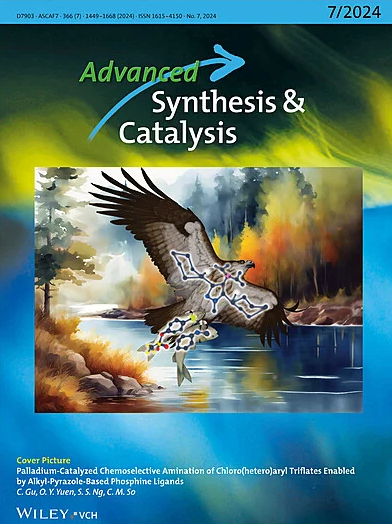重油加氢裂化催化剂活性位点微环境设计
IF 4
2区 化学
Q2 CHEMISTRY, APPLIED
引用次数: 0
摘要
浆相加氢裂化(SPHC)是实现低品质重油高效转化的有效途径之一。催化剂的活性位点结构设计是提高催化剂性能的关键,但仍然具有挑战性。然而,到目前为止,关于提高SPHC性能的催化剂活性位点微环境设计的报道很少。本文系统综述了分子尺度上SPHC加氢催化剂活性位点微环境调控策略的研究进展。然后,针对分子催化剂容易聚集、原子利用率低导致加氢效率低的问题,系统地提出了原子尺度催化剂的设计策略。在此基础上,揭示了加氢催化剂活性位点微环境的设计原则。最后,展望了原子分散催化剂在SPHC应用中的机遇和挑战。这为稠油SPHC加氢催化剂的设计和开发提供了重要的参考。本文章由计算机程序翻译,如有差异,请以英文原文为准。
Active‐Site Microenvironments Design of Hydrogenation Catalysts for Enhanced Hydrocracking of Heavy Oil
Slurry phase hydrocracking (SPHC) is one of the effective ways to achieve efficient conversion of low‐quality heavy oil. The active‐site structural design of catalysts is crucial to improve the performance but is still challenging. However, up to now, few reviews on the active‐site microenvironments design of catalyst for enhancing SPHC performance have been reported. Herein, this review summarizes the research progress on the active‐site microenvironments regulation strategies of hydrogenation catalysts at the molecular scale for SPHC systematically. Then, based on the problem of low hydrogenation efficiency due to the easy aggregation and low atomic utilization of molecular catalysts, the design strategies for catalysts on the atomic scale are proposed systematically. Subsequently, the design principles of active‐site microenvironment for hydrogenation catalysts to enhance the SPHC are revealed. Finally, the opportunities and challenges of atomically dispersed catalyst for SPHC are prospected. This review provides an important reference for the design and development of high‐performance hydrogenation catalysts for SPHC of heavy oil.
求助全文
通过发布文献求助,成功后即可免费获取论文全文。
去求助
来源期刊

Advanced Synthesis & Catalysis
化学-应用化学
CiteScore
9.40
自引率
7.40%
发文量
447
审稿时长
1.8 months
期刊介绍:
Advanced Synthesis & Catalysis (ASC) is the leading primary journal in organic, organometallic, and applied chemistry.
The high impact of ASC can be attributed to the unique focus of the journal, which publishes exciting new results from academic and industrial labs on efficient, practical, and environmentally friendly organic synthesis. While homogeneous, heterogeneous, organic, and enzyme catalysis are key technologies to achieve green synthesis, significant contributions to the same goal by synthesis design, reaction techniques, flow chemistry, and continuous processing, multiphase catalysis, green solvents, catalyst immobilization, and recycling, separation science, and process development are also featured in ASC. The Aims and Scope can be found in the Notice to Authors or on the first page of the table of contents in every issue.
 求助内容:
求助内容: 应助结果提醒方式:
应助结果提醒方式:


